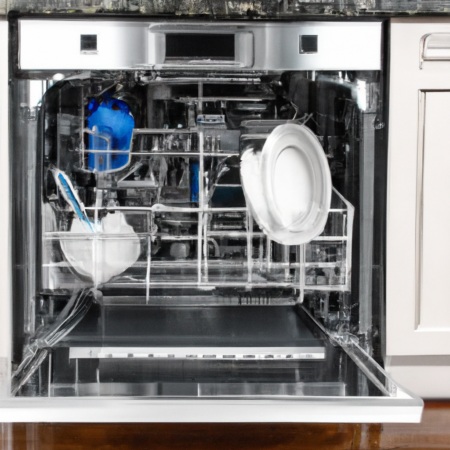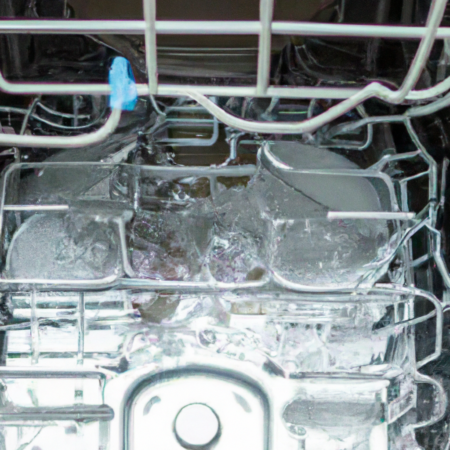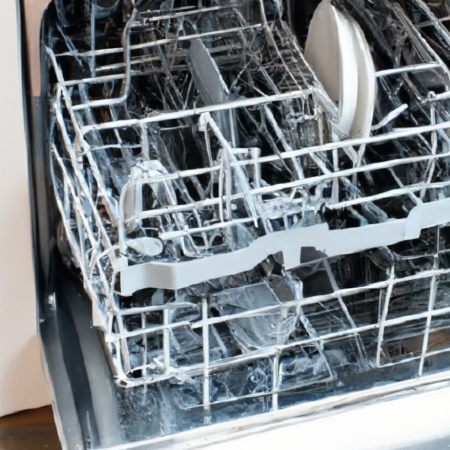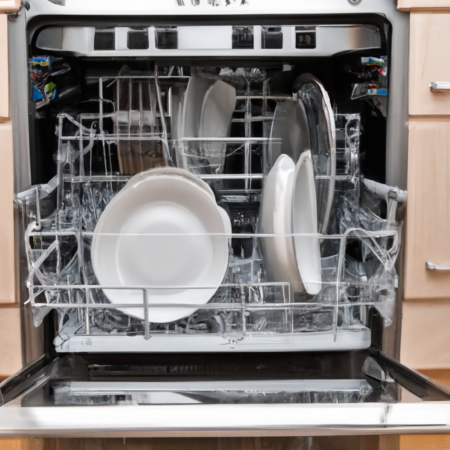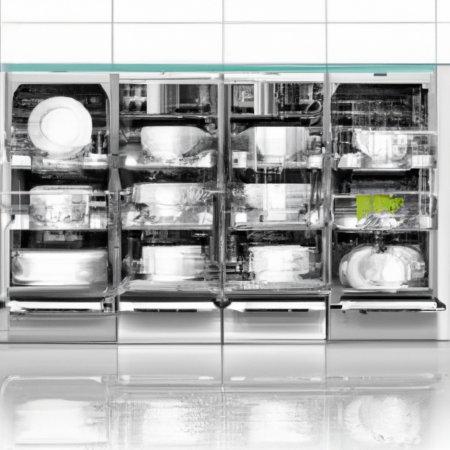We're an affiliate
We hope you love the products we recommend! Just so you know, we may collect a share of sales or other compensation from the links on this page. Thank you if you use our links, we really appreciate it!
Have you ever wondered if all dishwashers are created equal when it comes to fitting into your kitchen? Whether you’re moving into a new home or replacing an old dishwasher, it’s important to consider the size and dimensions to ensure a proper fit. In this article, we will explore the factors that determine whether a dishwasher will fit in your space, and provide tips for measuring and finding the perfect fit for your kitchen. Say goodbye to the hassle of trying to force a dishwasher into a space that it doesn’t belong – let’s explore the world of dishwasher fittings together!
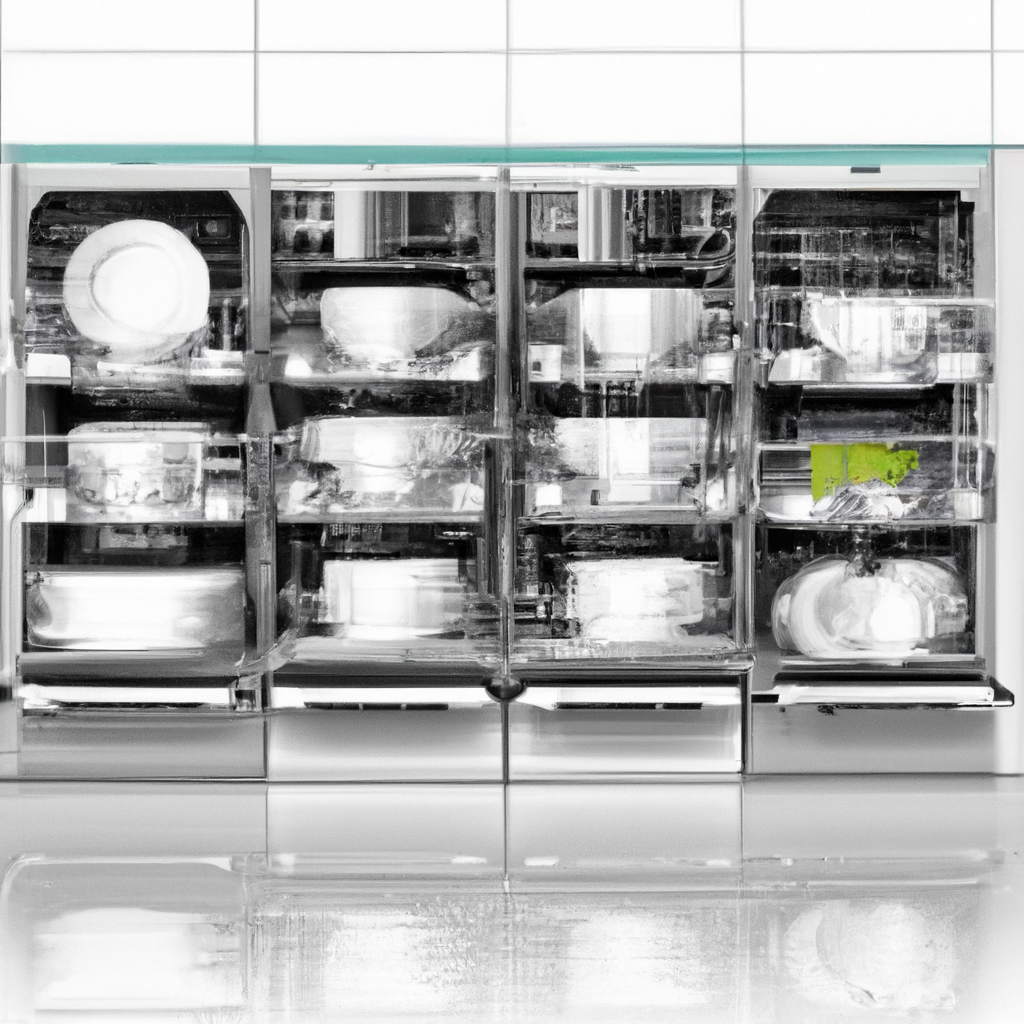
Understanding Dishwasher Sizes
When it comes to purchasing a dishwasher, one of the most important considerations is its size. Not all dishwashers are created equal, and understanding the different dimensions and variations in sizes is crucial in ensuring that your dishwasher fits perfectly in your kitchen. This article will provide you with a comprehensive guide to understanding dishwasher sizes, including typical dimensions, variations, how to measure for a dishwasher, common types of dishwashers and their sizes, installation constraints, adapting to different sizes, manufacturer differences, and tips for efficient dishwasher use.
Typical Dimensions of Dishwashers
Dishwashers come in a range of sizes, but there are some typical dimensions that can give you a good starting point. Most standard dishwashers have a width of 24 inches, a height of 35 inches, and a depth of 24 inches. These dimensions are designed to fit seamlessly into most kitchen spaces and cabinetry. However, it’s important to note that variations in size exist, so it’s crucial to measure your space and consider any constraints before making a purchase.
Variations in Dishwasher Sizes
While standard dimensions exist, there are also variations in dishwasher sizes to accommodate different kitchen layouts and requirements. Some dishwashers, known as compact dishwashers, are designed for smaller kitchens or households with limited space. These compact models typically have a width of 18 inches instead of the standard 24 inches. On the other hand, there are also larger dishwashers available, known as oversized or professional models, which offer greater capacity and dimensions beyond the standard measurements.
How to Measure for a Dishwasher
To ensure that your dishwasher fits perfectly in your kitchen, you’ll need to accurately measure the space where it will be installed. Start by measuring the height, width, and depth of the designated area. Ensure that you leave enough space for the dishwasher’s door to open comfortably without any obstructions. It’s also important to consider any existing cabinetry, countertops, and plumbing or electrical connections that may affect the installation. Taking accurate measurements will help you make an informed decision when purchasing a dishwasher and avoid any surprises during installation.
Common Dishwasher Types and Their Sizes
Now that you understand the typical dimensions and variations in dishwasher sizes, let’s explore the common types of dishwashers and their respective sizes. This will give you a better understanding of which type might be the best fit for your kitchen and lifestyle.
Built-In Standard Dishwashers
Built-in standard dishwashers are the most common type and are designed to be integrated into your kitchen’s cabinetry. As mentioned earlier, these dishwashers typically have a width of 24 inches, a height of 35 inches, and a depth of 24 inches. They offer a sleek and seamless look, as they blend in with the surrounding cabinetry. If you have the space and prefer a built-in look, a standard dishwasher may be the right choice for you.
Compact Dishwashers
Compact dishwashers are ideal for smaller kitchens or households with limited space. These dishwashers have a width of 18 inches, making them 6 inches narrower than standard dishwashers. Despite their smaller size, compact dishwashers can still offer impressive cleaning power and efficiency. If you have a smaller kitchen or live alone or with a partner, a compact dishwasher could be the perfect solution for your needs.
Portable Dishwashers
As the name suggests, portable dishwashers offer the convenience of mobility. These dishwashers are not built into your cabinetry like the standard and compact models. Instead, they are freestanding units that can be moved around your kitchen as needed. Portable dishwashers typically have a width of 24 inches, similar to standard dishwashers, but their height may vary. They can be an excellent option if you have limited space for a built-in dishwasher or if you’re renting a home and want a portable solution.
Drawer Dishwashers
Drawer dishwashers are a unique type of dishwasher that offer enhanced flexibility and convenience. Instead of a single door, these dishwashers have drawers that can be independently operated. Drawer dishwashers come in two sizes: single drawer and double drawer. The standard dimensions for a single drawer dishwasher are approximately 24 inches in width, 17 inches in height, and 24 inches in depth. Double drawer dishwashers are roughly double the width of a single drawer dishwasher. Drawer dishwashers are an excellent choice if you want the flexibility to run smaller loads or if you have limited bending or reaching ability.
Standard Dishwasher Dimensions
Now that we’ve explored the different types of dishwashers and their sizes, let’s delve deeper into the dimensions of standard dishwashers. Understanding the height, width, and depth constraints will help you determine if a standard dishwasher will fit seamlessly into your kitchen.
Height and Width Constraints
As mentioned earlier, standard dishwashers typically have a height of 35 inches and a width of 24 inches. However, it’s essential to consider any height and width constraints in your kitchen. Some cabinets or countertops may have specific measurements, and your dishwasher needs to fit within these dimensions. Additionally, you need to ensure that there is enough space for the dishwasher’s door to open fully without any obstructions.
Depth of Standard Dishwashers
The standard depth of a dishwasher is 24 inches, which is designed to align with most kitchen countertops and cabinetry. However, it’s worth noting that the depth may vary slightly depending on the model and brand. It’s crucial to measure your available space accurately to ensure that the dishwasher’s depth doesn’t protrude beyond your desired layout.
Consideration of Door Clearance
When measuring for a dishwasher, it’s essential to consider door clearance and the space required for the dishwasher’s door to open fully. The door will need enough room to open without hitting adjacent cabinets, walls, or appliances. Allow ample clearance between the dishwasher and any adjacent objects to ensure ease of use and prevent any potential damage.

Non-Standard Dishwasher Dimensions
While standard dishwashers are the most common, there are several non-standard dishwasher dimensions available on the market. Let’s explore some of these options and their unique sizes.
Slimline Dishwashers
Slimline dishwashers are narrower than standard dishwashers, making them a great fit for compact kitchens or areas with limited space. These dishwashers typically have a width of 18 inches or less, providing a space-saving solution without compromising on performance. Slimline dishwashers are a popular choice for apartments, small houses, or places where space is at a premium.
Counter-top Dishwashers
If you don’t have the space or accessibility for a built-in or freestanding dishwasher, a countertop dishwasher may be the ideal solution for you. These compact dishwashers sit on your kitchen countertop and connect to your sink faucet for water supply. Countertop dishwashers are typically small, with a width of around 22 inches, a height of 17 inches, and a depth of 20 inches. While they may have a smaller capacity, they are an excellent alternative if you have limited space or are looking for more flexibility in your kitchen layout.
In-Sink Dishwashers
In-sink dishwashers, often referred to as dish drawers or dishwasher drawers, are another non-standard option worth considering. These dishwashers are installed directly into your sink cabinet, giving you the convenience of having a dishwasher seamlessly integrated into your kitchen setup. The dimensions of in-sink dishwashers vary depending on the model and brand, but they generally have a width similar to standard dishwashers and a height that fits within your sink cabinet. In-sink dishwashers are a perfect choice if you want a compact and efficient dishwasher that doesn’t take up additional space in your kitchen.
Installation Constraints for Dishwasher Sizes
When installing a dishwasher, it’s important to consider various constraints that may affect the process. These constraints revolve around cabinetry, countertops, plumbing, electrical connections, and access paths. Understanding these limitations in advance will help ensure a smooth and successful installation.
Cabinetry and Countertop Limitations
Before selecting a dishwasher, consider your existing cabinetry and countertops. Ensure that there is enough clearance and space to accommodate the dishwasher’s dimensions. If necessary, consult with a professional to determine if any modifications are required to fit the dishwasher seamlessly into your cabinetry and countertop setup.
Plumbing and Electrical Constraints
Dishwashers require both plumbing and electrical connections to function properly. Ensure that your kitchen has the necessary plumbing and electrical provisions for a dishwasher installation. Plumbing connections typically involve connecting the dishwasher to the existing water supply and drain lines, while electrical connections require a dedicated circuit for the dishwasher. If these connections are not already in place, consult a professional to install them correctly.
Access Path Considerations
During the installation process, it’s crucial to consider the dishwasher’s access path. You’ll need to navigate the dishwasher through your kitchen to reach its designated spot. Measure doorways, hallways, and any other tight spaces to ensure that the dishwasher can be maneuvered without any obstructions. This step will help prevent any damage to your kitchen or the dishwasher during the installation process.
Adapting to Different Dishwasher Sizes
If you find that your kitchen space is not compatible with standard dishwasher sizes or the dimensions of the dishwasher you desire, there are several options to adapt your kitchen to accommodate different sizes.
Modifying Cabinetry
One option is to modify your existing cabinetry to fit the dishwasher size you prefer. This may involve removing or resizing cabinets to create the necessary space. Depending on your cabinetry’s material and construction, it’s essential to consult with a professional to ensure that the modifications are carried out correctly and maintain the integrity and functionality of your kitchen.
Using Dishwasher Spacers
Dishwasher spacers are another solution for adapting to different dishwasher sizes. These spacers are designed to fill the gaps between your dishwasher and surrounding cabinets, creating a seamless appearance. They ensure that the dishwasher fits securely in the designated space without any unwanted movement. dishwasher spacers are available in various sizes and can be adjusted to fit your specific requirements.
How to Change Plumbing and Electrical for Different Sizes
If you’re switching to a dishwasher with different dimensions, you may need to make changes to your plumbing and electrical connections. This may involve relocating water supply and drain lines or modifying electrical circuits to accommodate the new dishwasher’s specifications. Since plumbing and electrical work can be complex, it’s highly recommended to hire a professional to ensure that the changes are made safely and in compliance with local building codes.
Manufacturer Differences in Dishwasher Sizes
It’s important to note that dishwasher sizes can also vary between different manufacturers. While most manufacturers adhere to standard dimensions, there may still be slight variations. When comparing dishwashers from different brands, it’s crucial to review the exact measurements provided by the manufacturer and compare them to your available space. Additionally, different brands may offer a range of non-standard dishwasher sizes, giving you more flexibility in finding the perfect fit for your kitchen.
Dishwasher Sizes by Brand
Each dishwasher brand may offer a unique range of sizes to cater to various kitchen layouts and consumer preferences. Some brands may specialize in compact dishwashers, while others focus on oversized or professional models. Consider researching different brands to understand their specific dishwasher size offerings and how they align with your requirements.
How Brands Handle Standard vs. Non-Standard Sizes
Some brands may exclusively offer standard dishwasher sizes, while others may provide a wider range of non-standard options. Understanding how different brands handle standard and non-standard sizes will give you a better idea of which brand is best suited for your needs. It’s worth noting that some brands may have unique features or technologies that can enhance the dishwasher’s performance and efficiency, regardless of its size.
Brand Specific Installation Considerations
When selecting a dishwasher, it’s essential to familiarize yourself with any brand-specific installation considerations. Each brand may have its own recommendations or requirements for installation, which may include specific guidelines for cabinetry modifications, plumbing connections, electrical provisions, or access path specifications. Taking note of these considerations will help ensure a smooth installation process and prevent any potential issues or complications.
Ensuring Efficient Dishwasher Use
Regardless of the size of your dishwasher, there are several tips you can follow to ensure its efficient and optimal use. These tips will help you maximize the dishwasher’s cleaning power, minimize water and power consumption, and select the right detergent based on the dishwasher’s size.
Loading Dishes Correctly Regardless of Size
Properly loading your dishwasher is key to achieving clean and spotless dishes. Regardless of the dishwasher’s size, it’s important to follow loading instructions provided by the manufacturer. Avoid overcrowding the dishwasher, as this can hinder proper water circulation and detergents’ effectiveness. Arrange dishes strategically, ensuring that they are not blocking spray arms or impeding the dishwasher’s functionality.
Maintaining Optimal Water and Power Usage
Efficiency is a vital aspect of dishwasher use, regardless of its size. To ensure optimal water and power usage, choose the appropriate cycle based on the level of cleaning required. Many dishwashers offer eco-friendly or energy-saving options that reduce water and power consumption. Additionally, scraping off excess food particles before loading dishes can help minimize the need for pre-rinsing and save water.
Taking Size Into Consideration When Buying Detergent
When selecting detergent for your dishwasher, it’s important to consider its size. Some detergents are specifically formulated for use in compact dishwashers or dish drawers, while others are designed for standard or oversized models. Choosing the right detergent will enhance cleaning performance and ensure that it is suitable for your dishwasher’s size and capacity. Follow the manufacturer’s recommendations for detergent usage to achieve the best results.
Replacing Your Current Dishwasher
If you’re replacing your existing dishwasher, there are several factors to consider to ensure that the new dishwasher fits seamlessly into your kitchen.
Measuring Your Existing Dishwasher
Before purchasing a new dishwasher, measure your existing dishwasher’s dimensions. This will give you a baseline for selecting a replacement dishwasher that matches or exceeds your current dishwasher’s size. If your current dishwasher fits perfectly and you’re satisfied with its dimensions, you can look for a replacement with the same or similar measurements. On the other hand, if you want to make modifications or need a different size, take accurate measurements to guide your decision-making process.
Choosing a Replacement Dishwasher
With your existing dishwasher’s measurements in hand, you can begin exploring replacement options. Consider factors such as the type of dishwasher, size, capacity, energy efficiency, and any additional features that align with your preferences and requirements. Narrow down your choices by comparing different brands and models that meet your specific criteria.
Dealing With Size Differences When Replacing
If you’re replacing your dishwasher with a different size, you’ll need to make adjustments to your kitchen to accommodate the new dimensions. This may involve modifying cabinetry, utilizing dishwasher spacers, or adapting plumbing and electrical connections, as mentioned earlier. Keep in mind that these modifications should be carried out carefully and in consultation with professionals to ensure the best results.
Conclusion: Not All Dishwashers Fit the Same
In conclusion, understanding dishwasher sizes is crucial when selecting the perfect dishwasher for your kitchen. Not all dishwashers fit the same, and variations in sizes exist to accommodate different kitchen layouts, space constraints, and consumer preferences. Take measurements seriously, considering height, width, depth, and door clearance to ensure a seamless fit. Be aware of non-standard sizes and the unique dimensions of compact, portable, drawer, slimline, countertop, and in-sink dishwashers. Consider installation constraints, such as cabinetry and countertop limitations, plumbing and electrical requirements, and access path considerations. If needed, adapt your kitchen to accommodate different dishwasher sizes through cabinetry modifications, dishwasher spacers, and adjustments to plumbing and electrical connections. Manufacturer differences exist in dishwasher sizes, with brands offering both standard and non-standard options. Ensure efficient dishwasher use by loading dishes correctly, maintaining optimal water and power usage, and selecting the right detergent based on the dishwasher’s size. When replacing your current dishwasher, measure accurately, choose a suitable replacement, and make any necessary modifications to accommodate size differences. By following these guidelines and knowing your kitchen’s constraints, you can find the perfect dishwasher that fits seamlessly into your space and meets your cleaning needs.


